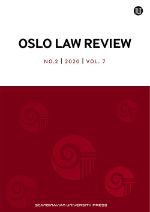The EU Commission’s Action Plan on Financing Sustainable Growth reflects a pivotal shift in policy priorities, spurred by a fast-moving international agenda, and specifically the adoption of the Paris Agreement and the UN Sustainable Development Goals. The ambitious goals of the Action Plan require private capital to be reoriented to more sustainable investment purposes. To this end, one key objective in the Action Plan is to foster transparency and long-termism in financial and economic activity, implemented among others through imposing new requirements on ESG-related disclosure on companies and financial market actors. This article investigates whether and how that policy objective is impacted by the ubiquitous market practice of high-frequency trading (HFT). Evidence suggests that HFT may have an inbuilt focus on short-term pricing signals. Furthermore, HFT can hamper the uptake of the new ESG-related disclosure requirements with negative effect for sustainable market outcomes. Neither the new regulatory initiatives nor the current regulatory measures in Directive 2014/65/EU (MiFID II) will alleviate these shortcomings. This constitutes a gap in the policy agenda relating to the institutional and organisational features of the current market structure. These issues should be given consideration in future policy-making assessments and efforts aiming to improve long-term sustainability in financial markets.
Published 13 October 2020, Oslo Law Review, 2/2020
https://juridika.no/tidsskrifter/oslo-law-review/2020/2/artikkel/myklebust
